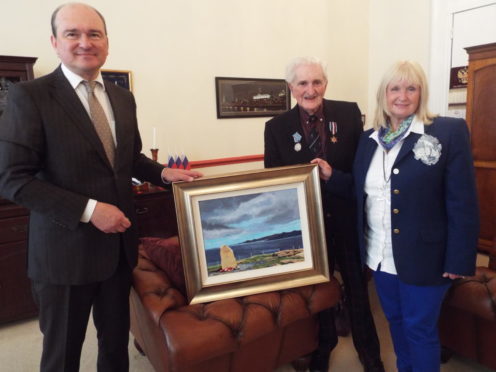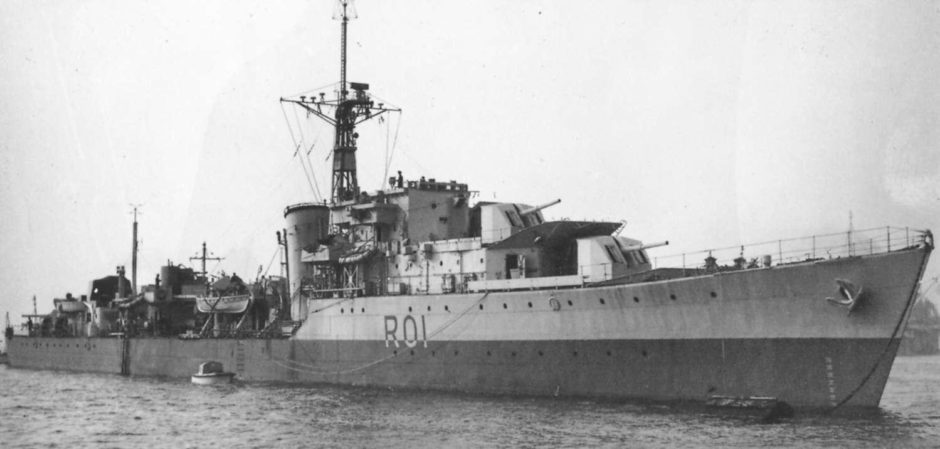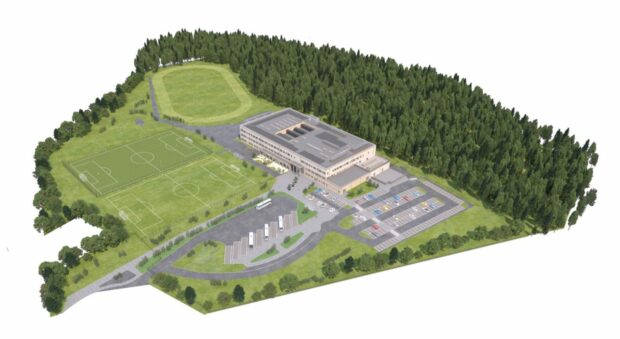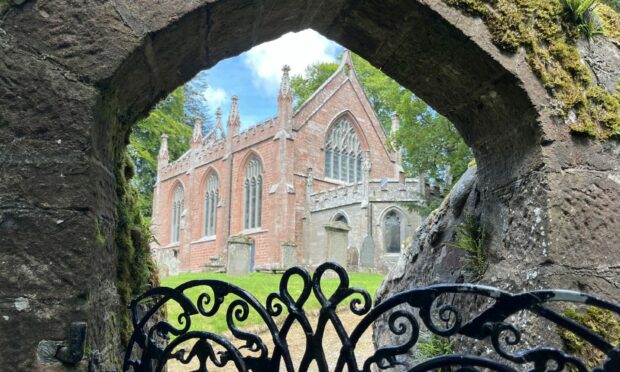A painting commissioned by an Angus veteran of the World War 2 Arctic convoys has been presented to the Consul General of Russia – and will be displayed in a prestigious St Petersburg museum.
Murray Haddow, 92, who lives in Monifieth, served on board the destroyer HMS Caprice during the perilous journeys which took much needed supplies, including food and weapons to the Russian people.
Mr Haddow was involved in six of the 78 convoys which took place between August 1941 and May 1945, having joined the navy at 18, and still has vivid memories of the treacherous journeys from Loche Ewe and Scapa Flow to Russia, but is modest about his achievements, describing himself simply as ‘an accidental hero’.
More than 3,000 British sailors and airmen died between 1941 and 1945 taking part in the convoys, a vital part of Churchill’s attempts to keep Stalin in the alliance against Hitler.
The voyage, described by Churchill as ‘the worst journey in the world’ was particularly dangerous as the almost eternal Arctic daylight meant that the convoys were under constant threat from German air attack, while surface ships of the German navy, and the feared U-boats harried them at every opportunity.
Today Mr Haddow is one of just a few surviving veterans of the convoys, and has been honoured by both the UK and Russian governments with the Arctic Star medal and Ushakov medal for his part in the campaign.
In 1999, a monument to those who lost their lives taking part in the convoys was unveiled at Cove in Wester Ross.
Mr Haddow commissioned a painting of the monument which has now been presented to the Consul General of Russia, Mr Andrey Pritsipov, at a ceremony at the Russian Consulate in Edinburgh.
The painting will now be taken to Russia, where it will be exhibited at the new ‘Museum of the history of the Arctic Convoys 1941-1945’ at St Petersburg’s Admiral Makarov State University in Russia.
The museum is believed to be the largest and most complete exhibition in the world dedicated to the history of the Arctic convoys and will open early next year.
The Consul General said: “The brotherhood in arms forged between our nations stands as an indispensable chapter of our shared and proud past, providing us with an obligation to unite our efforts –personal, private or public – to build an enduring and lasting legacy of the Arctic Convoys and their heroes,” said Mr Pritsipov.
“That is why any support and attention to the matter is much appreciated. And we are most grateful for this work of art from the veteran Murray Haddow and family, which depicts the mood and solemn beauty of the place where the convoys were formed.”
He added: “Chronicles of the convoys are an integral part of history of Russian-British relations.
“The fate of thousands of sailors of Great Britain, Russia, the United States and other allied countries was to challenge formidable Northern seas to confront the enemy, ready to attack at any moment.
“Last year I was delighted to take part in the official opening of the Russian Arctic Convoys Project’s exhibition centre in Aultbea and I also look forward to opening of the Arctic Convoys Museum in St Petersburg very soon.
“I hope to see all these important historical places of worship, grief and pride working together in a strong global network aimed at remembering and promoting the strength of human spirit of those who sailed in these legendary convoys.”











